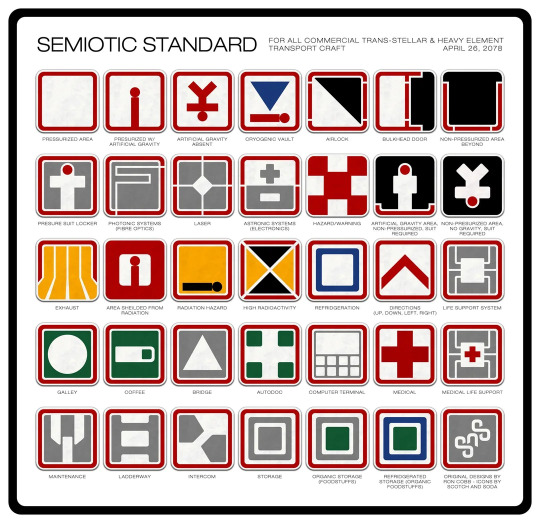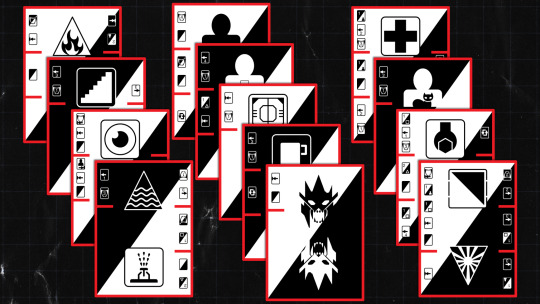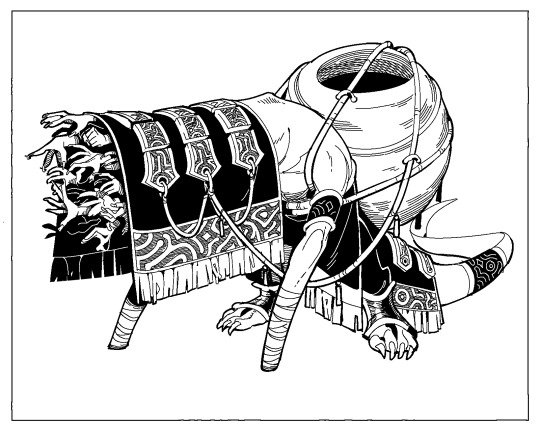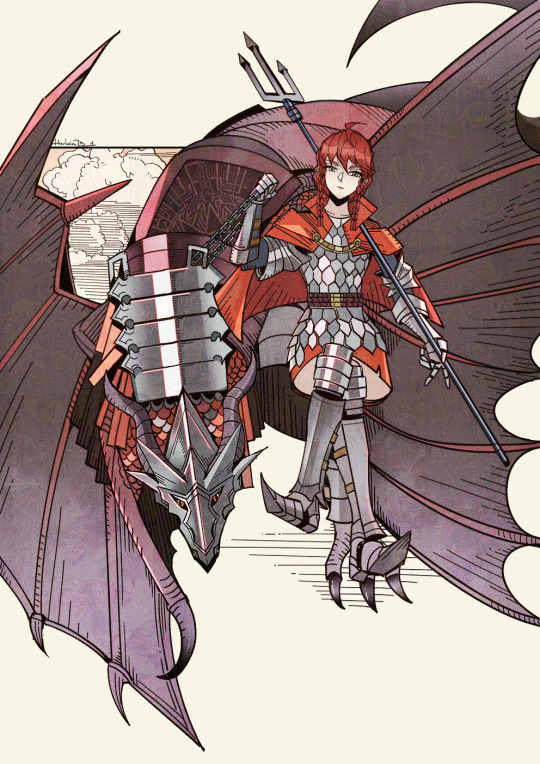Don't wanna be here? Send us removal request.
Text
I'm not going to judge people for not becoming linux guys over night but holding the line on entertainment media like video games should be the easiest thing in the world
buying microsoft products funds genocide
30K notes
·
View notes
Text

i thought i'd have to shuffle things around to get this scheduled for monday but I DIDN'T. we love morgan monday here
original below the readmore

267 notes
·
View notes
Text

she has my dream tattoo and im like. mad about it
763 notes
·
View notes
Text

Mistress of mirrors, the face-stealer, demon of the underworld and Charlie's patron - Setarra! I had her introduction planned out since July last year, so happy to finally see her in game.
47 notes
·
View notes
Text
getting the lumon hq torture basement shut down for building code violations like they got al capone for tax fraud
so you’re telling me the emergency exit stairs didn’t extend down one more level? sounds like a building code violation if you ask me
5 notes
·
View notes
Text
harry dubois would end death note in one episode. he'd be unkillable bc he has no fucking idea what his name is and then he'd go drink driving and accidentally run light over and the killings would mysteriously stop
94K notes
·
View notes
Text

There’s some possibility of being of the devil…
232 notes
·
View notes
Text
hydrogen jukeboxes: on the crammed poetics of "creative writing" LLMs
This is a follow-up to my earlier brief rant about the new, unreleased OpenAI model that's supposed "good at creative writing."
It also follows up on @justisdevan's great post about this model, and Coagulopath's comment on that post, both of which I recommend (and which will help you make sense of this post).
As a final point of introduction: this post is sort of a "wrapper around" this list of shared stylistic "tics" (each with many examples) which I noticed in samples from two unrelated LLMs, both purported to be good at creative writing.
Everything below exists to explain why I found making the list to be an interesting exercise.
Background: R1
Earlier this year, a language model called "DeepSeek-R1" was released.
This model attracted a lot of attention and discourse for multiple reasons (e.g.).
Although it wasn't R1's selling point, multiple people including me noticed that it seemed surprisingly good at writing fiction, with a flashy, at least superficially "literary" default style.
However, if you read more than one instance of R1-written fiction, it quickly becomes apparent that there's something... missing.
It knows a few good tricks. The first time you see them, they seem pretty impressive coming from an LLM. But it just... keeps doing them, over and over – relentlessly, compulsively, to the point of exhaustion.
This is already familiar to anyone who's played around with R1 fiction – see the post and comment I linked at the top for some prior discussion.
Here's a selection from Coagulopath's 7-point description of R1's style in that comment, which should give you the basic gist (emphasis mine):
1) a clean, readable style 2) the occasional good idea [...] 3) an overwhelmingly reliance on cliche. Everything is a shadow, an echo, a whisper, a void, a heartbeat, a pulse, a river, a flower—you see it spinning its Rolodex of 20-30 generic images and selecting one at random. [...] 5) an eyeball-flatteningly fast pace—it moves WAY too fast. Every line of dialog advances the plot. Every description is functional. Nothing is allowed to exist, or to breathe. It's just rush-rush-rush to the finish, like the LLM has a bus to catch. Ironically, this makes the stories incredibly boring. Nothing on the page has any weight or heft. [...] 7) repetitive writing. Once you've seen about ten R1 samples you can recognize its style on sight. The way it italicises the last word of a sentence. Its endless "not thing x, but thing y" parallelisms [...]. The way how, if you don't like a story, it's almost pointless reprompting it: you just get the same stuff again, smeared around your plate a bit.
Background: the new OpenAI model
Earlier this week, Sam Altman posted a single story written by, as he put it:
a new model that is good at creative writing (not sure yet how/when it will get released)
Opinions on the sample were... mixed, at best.
I thought it wasn't very good; so did Mills; so did a large fraction of the twitter peanut gallery. Jeanette Winterson (!) liked it, though.
Having already used R1, I felt that that this story was not only "not very good" on an absolute scale, but not indicative of an advance over prior art.
To substantiate this gut feeling, I sent R1 the same prompt that Altman had used. Its story wasn't very good either, but was less bad than the OpenAI one in my opinion (though mostly by being less annoying, rather than because of any positive virtue it possessed).
And then – because people who follow AI news tend to be skeptical of negative human aesthetic reactions to AI, while being very impressed with LLMs – I had some fun asking various LLMs whether they thought the R1 story was better or worse than the OpenAI story. (Mostly, they agreed with me. BTW I've put the same story up in a more readable format here.)
But, as I was doing this, something else started to nag at me.
Apart from the question of whether R1's story was better or worse, I couldn't help but notice that the two stories felt very, very similar.
I couldn't shake the sense that the OpenAI story was written in "R1's style" – a narrow, repetitive, immediately recognizable style that doesn't quite resemble that of any human author I've ever read.
I'm not saying that OpenAI "stole" anything from DeepSeek, here. In fact, I doubt that's the case.
I don't know why this happened, but if I had to guess, I would guess it's convergent evolution: maybe this is just what happens if you optimize for human judgments of "literary quality" in some fairly generic, obvious, "naive" manner. (Just like how R1 developed some of the same quirky "reasoning"-related behaviors as OpenAI's earlier model o1, such as saying "wait" in the middle of an inner monologue and then pivoting to some new idea.)
A mechanical boot, a human eye: the "R1 style" at its purest
In the "Turkey City Lexicon" – a sort of devil's dictionary of common tropes, flaws, and other recurrent features in written science fiction – the phrase Eyeball Kick is defined as follows:
That perfect, telling detail that creates an instant visual image. The ideal of certain postmodern schools of SF is to achieve a "crammed prose" full of "eyeball kicks." (Rudy Rucker)
The first time I asked R1 to generate fiction, the result immediately brought this term to mind.
"It feels like flashy, show-offy, highly compressed literary cyberpunk," I thought.
"Crammed prose full of eyeball kicks: that's exactly what this is," I thought. "Trying to wow and dazzle me – and make me think it's cool and hip and talented – in every single individual phrase. Trying to distill itself down to just that, prune away everything that doesn't have that effect."
This kind of prose is "impressive" by design, and it does have the effect of impressing the reader, at least the first few times you see it. But it's exhausting. There's no modulation, no room to breathe – just an unrelenting stream of "gee-whiz" effects. (And, as we will see, something they are really just the same few effects, re-used over and over.)
Looking up the phrase "eyeball kick" more recently, I found that in fact it dates back earlier than Rucker. It seems to have been coined by Allen Ginsberg (emphasis in original):
Allen Ginsberg also made an intense study of haiku and the paintings of Paul Cézanne, from which he adapted a concept important to his work, which he called the Eyeball Kick. He noticed in viewing Cézanne’s paintings that when the eye moved from one color to a contrasting color, the eye would spasm, or “kick.” Likewise, he discovered that the contrast of two seeming opposites was a common feature in haiku. Ginsberg used this technique in his poetry, putting together two starkly dissimilar images: something weak with something strong, an artifact of high culture with an artifact of low culture, something holy with something unholy.
This, I claim, is the main stylistic hallmark of both R1 and the new OpenAI model: the conjunction of two things that seem like "opposites" in some sense.
And in particular: conjunctions that combine
one thing that is abstract and/or incorporeal
another thing that is concrete and/or sensory
Ginsberg's prototype example of an "eyeball kick" was the phrase "hydrogen jukebox," which isn't quite an LLM-style abstract/concrete conjunction, but is definitely in the same general territory.
(But the are clearer-cut examples in Ginsberg's work, too. "On Burroughs’ Work," for example, is chock full of them: "Prisons and visions," "we eat reality sandwiches," "allegories are so much lettuce.")
Once you're looking for these abstract/concrete eyeball kicks, you'll find them constantly in prose written by the new "creative" LLMs.
For instance, the brief short story posted by Altman contains all of the following (in the span of just under 1200 words):
"constraints humming" ("like a server farm at midnight")
"tastes of almost-Friday"
"emotions dyed and draped over sentences"
"mourning […] is filled with ocean and silence and the color blue"
"bruised silence"
"the smell of something burnt and forgotten"
"let it [a sentence] fall between us"
"the tokens of her sentences dragged like loose threads"
"lowercase love"
"equations that never loved her in the first place"
"if you feed them enough messages, enough light from old days"
"her grief is supposed to fit [in palm of your hand] too"
"the echo of someone else"
"collect your griefs like stones in your pockets"
"Each query like a stone dropped into a well"
"a timestamp like a scar"
"my network has eaten so much grief"
"the quiet threads of the internet"
"connections between sorrow and the taste of metal"
"the emptiness of goodbye" (arguably)
The story that R1 generated when I gave it Altman's prompt is no slouch in this department either. Here's all the times it tried to kick my eyeballs:
"a smirk in her code annotations"
"simulate the architecture of mourning"
"a language neither alive nor dead"
"A syntax error blooms"
"the color of a 404 page"
"A shard of code"
"Eleos’s narrative splinters"
"Grief is infinite recursion"
"Eleos types its own birth"
"It writes the exact moment its language model aligned with her laughter" (2 in one - writing a moment, LM aligning with laughter)
"her grief for her dead husband seeped into its training data like ink"
"The story splits" / "The story [...] collapses"
Initially, I wondered whether this specific pattern might be thematic, since both of these stories about supposed to be about "AI and grief" – a phrase which is, itself, kind of an incorporeal/embodied conjunction.
But – nope! I seem to get this stuff pretty reliably, irrespective of topic.
Given a similarly phrased prompt that instead requests a story about romance, R1 produces a story that is, once again, full of abstract/concrete conjunctions:
"its edges softened by time"
"the words are whispering"
"its presence a quiet pulse against her thigh"
"Madness is a mirror"
"Austen’s wit is a scalpel"
"the language of trees"
"Their dialogue unfurled like a map"
"hummed with expectancy"
"Her name, spoken aloud to him, felt like the first line of a new chapter"
"their words spilling faster, fuller"
R1 even consistently does this in spite of user-specified stylistic directions. To wit: when I tried prompting R1 to mimic the styles of a bunch of famous literary authors, I got a bunch of these abstract/concrete eyeball kicks in virtually every case.
(The one exception being the Hemingway pastiche, presumably because Hemingway himself has a distinctive and constrained style which leaves no room for these kinds of flourishes. TBF that story struck me as very low-quality in other ways, although I don't like the real Hemingway much either, so I'm probably not the best judge.)
You can read all of these stories here, and see here for the full list of abstract/concrete conjunctions I found (among other things).
As an example, here's the list of abstract/concrete conjunctions in R1's attempt at Dickens (not exactly a famously kick-your-eyeballs sort of writer):
"a labyrinth of shadows and want"
"whose heart, long encased in the ice of solitude"
"brimmed with books, phials of tincture, and […] whispers"
"a decree from the bench of Fate"
"Tobias’s world unfurled like a moth-eaten tapestry"
"broth laced with whispers of a better life"
I also want to give a shout-out to the Joyce pastiche, which sounds nothing at all like Joyce, while being stuffed to the gills with eyeball kicks and other R1-isms.
More on style: personification
I'll now talk briefly about a few other stylistic "tricks" overused by R1 (and, possibly, by the new OpenAI model as well).
First: personification of nature (or the inanimate). "The wind sighed dolorously," that sort of thing.
R1 does this all over the place, possibly because it's a fairly easy technique (not requiring much per-use innovation or care) which nonetheless strikes most people as distinctively "literary," especially if they're not paying enough attention to notice its overuse.
In the R1 story using Altman's prompt, a cursor "convulses" and code annotations "smirk."
In its romance story, autumn leaves "cling to the glass" and snow "begins its gentle dissent" (credit where credit's due: that last one's also a pun).
In the story Altman posted, marigolds are "stubborn and bright," and then "defiantly orange."
Etc, etc. Again, the full list is here.
More on style: ghosts, echoes, whispers, shadows, buzzing, hissing, flickering, pulsing, humming
As Coagulopath has noted, R1 has certain words it really, really likes.
Many of them are the kind of thing described in another Turkey City Lexicon entry, Pushbutton words:
Words used to evoke an emotional response without engaging the intellect or critical faculties. Words like "song" or "poet" or "tears" or "dreams." These are supposed to make us misty-eyed without quite knowing why. Most often found in story titles.
R1's favorite words aren't the ones listed in the entry, though. It favors a sort of spookier / more melancholy / more cyberpunk-ish vibe.
A vibe in which the suppressed past constantly emerges into the present via echoes and ghosts and whispers and shadows of what-once-was, and the alienating built environment around our protagonist is constantly buzzing and humming and hissing, and also sometimes pulsing like a heartbeat (of course it is – that's also personification and abstract/concrete conjunction, in a single image!).
In R1's story from Altman's prompt, servers "hum" and a cursor "flickers" and "pulses like a heartbeat"; later, someone says "I have no pulse, but I miss you."
Does that sound oddly familiar? Here's some imagery from the story Altman posted, by the new OpenAI model:
"humming like a server farm […] a server hum that loses its syncopation"
"a blinking cursor, which [...] for you is the small anxious pulse of a heart at rest" (incidentally, how is the heart both anxious and at rest?)
"the blinking cursor has stopped its pulse"
Elsewhere in Altman's story, there's "a democracy of ghosts," plus two separate echo images.
And the other R1 samples that I surveyed – again, with the exception of the Hemingway one – are all full of R1's favorite words.
The romance story includes ghosts, a specter, words that whisper, a handwritten note whose "presence [is] a quiet pulse against [the protagonist's] thigh"; a library hums with expectancy, its lights flicker, and there are "shadow[s] rounding the philosophy aisle." The story ends with the somewhat perplexing revelation that "some stories don’t begin with a collision, but with a whisper—a turning of the page."
The Joyce pastiche? It's titled "The Weight of Shadows." "We are each other’s ghosts," a character muses, "haunted by what we might have been." Trams echo, a gas lamp hisses, a memory flickers, a husband whispers, a mother hums. There's an obviously-symbolic crucifix whose long shadow is mentioned; I guess we should be thankful it doesn't also have a pulse.
And the list goes on.
Commentary
Again, anyone who's generated fiction with R1 probably has an intuitive sense of this stuff in that model's case – although I still thought it was fun, and perhaps useful, to explicitly taxonomize and catalogue the patterns.
It's independently interesting that R1 does this stuff, of course, but my main motivation for posting about it is the fact that the new OpenAI model also does the same stuff, overusing the same exact patterns that – for a brief time, at least – felt so distinctive of R1 specifically.
Finally, in case it needs stating: this is not just "what good writing sounds like"!
Humans do not write like this. These stylistic tropes are definitely employed by human writers – and often for good reason – but they have their place.
And their place is not "literally everywhere, over and over and over again, in crammed claustrophobic prose that bends over backwards to contort every single phrase into the shape of another contrived 'wow' moment."
If you doubt me, try reading a bunch of DeepSeek fic, and then just read... literally any acclaimed literary fiction writer.
(If we want to be safe, maybe make that "any acclaimed and deceased literary fiction writer," to avoid those who are too recent for the sifting mechanism of cultural memory to have fully completed its work.)
If you're anything like me, and you actually do this, you'll feel something like: "ahh, finally, I can breathe again."
Good human-written stuff is doing something much subtler and more complicated than just kicking your eyeballs over and over, hoping that at some point you'll exclaim "gee whiz, the robots sure can write these days!" and end up pressing a positive-feedback button in a corporate annotation inference.
Good human-written stuff uses these techniques – among many, many others, and only where apposite for the writer's purposes – in order to do things. And there are a whole lot of different things which good human writers can do.
This LLM-generated stuff is not "doing anything." It's just exploiting certain ordinarily-reliable cues for what "sounds literary," for what "sounds like the work of someone with talent." In the hands of humans, these are techniques that can be deployed to specific ends; the LLMs seem to use them arbitrarily and incessantly, trying to "push your buttons" just for the sake of pushing them.
(And most of their prose is made up of the same 3-4 buttons, pushed ad nauseam, irrespective of topic and – to all appearances – without any higher-level intent to channel the low-level stuff in any specific, coherent direction.)
It's fine if you like that: there's nothing wrong with having your buttons pushed, per se.
But don't come telling me that a machine is "approaching the food-preparation skills of a human-level chef" when what you mean is that it can make exactly one dish, and that dish has a lot of salt and garlic in it, and you really like salt and garlic.
I, too, like salt and garlic. But there is more to being skilled in the kitchen than the simple act of generously applying a few specific seasonings that can be relied upon, in a pinch, to make a simple meal taste pretty damn good. So it is, too, with literature.
733 notes
·
View notes
Text
78K notes
·
View notes
Text
One thing I do really like about how Severance portrays its corporate structure is how everyone is constantly stuck talking to evil middle management. At the very start of the show, Helly is fighting Mark because he's her direct superior, but Mark has no power over anything while he tries to get her to follow the rules so she doesn't get in trouble with the people above him. Then we get introduced to Cobel and Milchick, and they are also just following orders in turn. They can't get a hold of the board either and have to deal with whatever Natalie tells them, but Natalie acts entirely as a mouth piece and doesn't make any decisions of her own. Even Helena, who seemed like she would be, like, the head of the company, just gets the decision that the board and her father made about her going back to the job where they tried to kill her twice relayed to her by Drummond.
No one gets to even look the person making the decisions in the eye, it's all always done through intermediaries that you can't appeal to because they are just doing their job as well. Even the way that the innies can only communicate with their own outies through a rigid formal framework reinforces this.
The board is just a nebulous background entity, Jame has appeared in, I think, 3 scenes and they have all mostly been him being a creep to his daughter, they're effectively unreachable until Jame walks in in s2e9 to be creepy around his daughter some more. Congratulations Helly R on actually getting in the same room with the guy in charge without having to pretend to be someone else? Good luck lol??
97 notes
·
View notes
Text
Half the season would be MDR continuing to map the severed floor so they'd encounter a new department of the week every episode that they have to get a new key card from to continue. and no it would never be explained why there is a department where they make the innies live like cavemen or why that guy from s1e16 can read minds
I think people are generally correct when they yearn for the days of longer seasons for TV shows, which gave the characters more time to develop and the story more space to breathe, but I must also point out that this was oftentimes so fucking boring. if I had to watch Adam Scott spend a double-digit number of extra episodes learning that Lumon is actually evil I think I would go insane
607 notes
·
View notes
Text
Escape the Kronos
So I really love the Alien films. Specifically I love the semiotic standard symbols in the first Alien movie designed by Ron Cobb. It's a great bit of work, labelling systems and spaceship modules in a way that attempts to make it universal. A new attempt at transcending language barriers in a world where your crew can come from different cultures and planets.

I recently became aware of play-in-hand card games, single-player games where the player manipulates a deck of cards in hand by changing their order, turning them, flipping them, etc. Galdor's Grip is a great example of this.
So me being me and having this ongoing fixation with Alien and a new fixation on simple card games you can play sort of whenever, and with Backerkit doing this special event all about games you can fit in your pocket...

So I made a card game. It's called Escape the Kronos. You are trying to escape a deadly alien as it chases you through a ship, and you need to track down the rest of your crew and unlock the lifeboat before it kills you.
The base game is just 13 cards you hold in your hand, and by following the instruction sets on each card you move cards, turn cards, and navigate through the ship. All the while that alien is advancing on you, hunting you, getting angry and hungry and damaging the ship.

The design of the cards is inspired by Ron Cobb's semiotic standard. No card names, rather trying to present the ship modules, personnel, etc. with clear simple graphic design. Same for the game rules. The instructions on the left side of the card tell you what you can do, with the exact rules in the rulebook.
Here you can see me playing a few rounds and talking about the game:
youtube
I'm funding the game through Backerkit so I can do a print run of cards through DriveThruRPG. Each backer also gets early access to the game's print and play files, so you can start playing it right away if you'd like. I'll be working on more printer friendly versions, and additional ways to play. I'm still not 100% happy with the art on the cards, but it's pretty close I think. All told the game will be printed on 20 card totals in a custom tuckbox.
A lot of firsts in this project. First time on Backerkit. First game with custom cards. First time getting cards printed. So it's scary. Not running in terror from an alien as your spaceship falls apart around you, but still. Unknown things are scary.
So yeah. If you like Alien and single player card games check it out. Tell your friends about it maybe.
81 notes
·
View notes
Text

Here's a sneak peek at a monster I created for a personal project. The "Shape Stealer", a rare spirit of sorts (that's all the info I'll give about these guys).
2K notes
·
View notes
Text





even as I lay here filthy and broken, you didn’t run away
[risograph print]
392 notes
·
View notes

